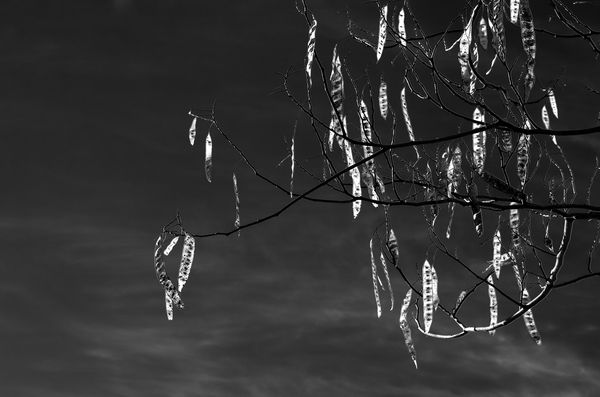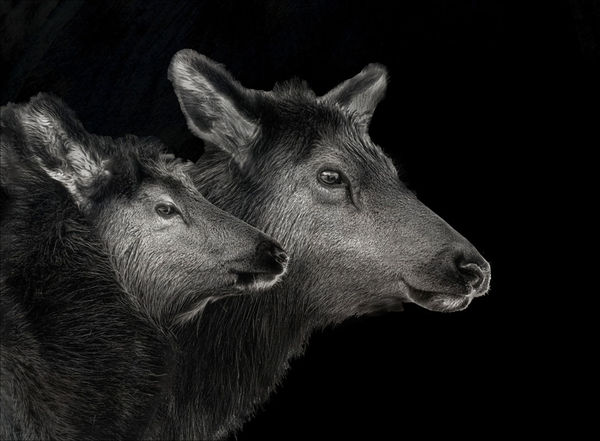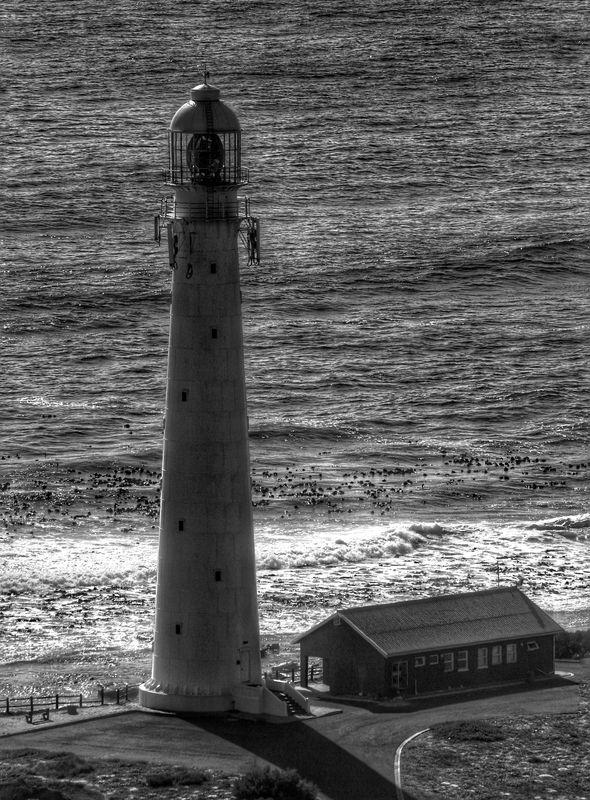Thinking in black & white, a topic for discussion and photo-share
Feb 3, 2016 08:22:44 #
When I was taking a b&w film class (decades ago), I had to train my eye to see in black and white, to ignore the colors that tend to demand our attention.
Shooting for b&w has unique challenges. With this topic I hope we can bring together photographers who are experienced in b&w (digital or film) and those who would like to learn more - to share ideas, critique and inspiration.
Please post an image in this thread and provide the following information:
1. Did you shoot with the intention of converting to b&w, or did you make the decision later, such as during pp or someones suggestion?
2. What factors do you feel make the image a good b&w candidate? (e.g. subject matter, or any of the elements listed below - contrast, textures, shadows etc.)
You are encouraged to offer constructive criticism to any or all photos in this thread, or to ask questions regarding a shot - so that we may all learn. Thank you!
From Outdoor Photographer magazine, August 2014:
1. Focus on light, highlights, shadows, contrast, texture, tonalities, form. Take a step back from looking at a scene literally and focus on seeing in the abstract of shades of gray.
2. Be aware of the sky. Use a polarizing filter on the camera, or in pp. Accentuate the effect with a subtle gradient filter in pp.
3. Look at shadows as forms. View camera users saw the image upside down, which helps with this visualization. Digital camera users need to force our brains to do it. With practice, this becomes easier.
4. Colors tend to be midtones. When viewing a landscape, focus on seeing the colors as midtones, then determine the best composition as a combination of midtones and shapes.
Other resources:
http://photography.tutsplus.com/articles/getting-started-in-black-and-white-photography--photo-6983
http://www.danieljgregory.com/bw-photography/thinking_black_white/
http://digital-photography-school.com/photographing-black-white-day/
http://www.dpmag.com/how-to/shooting/thinking-in-black-and-white
Shooting for b&w has unique challenges. With this topic I hope we can bring together photographers who are experienced in b&w (digital or film) and those who would like to learn more - to share ideas, critique and inspiration.
Please post an image in this thread and provide the following information:
1. Did you shoot with the intention of converting to b&w, or did you make the decision later, such as during pp or someones suggestion?
2. What factors do you feel make the image a good b&w candidate? (e.g. subject matter, or any of the elements listed below - contrast, textures, shadows etc.)
You are encouraged to offer constructive criticism to any or all photos in this thread, or to ask questions regarding a shot - so that we may all learn. Thank you!
From Outdoor Photographer magazine, August 2014:
1. Focus on light, highlights, shadows, contrast, texture, tonalities, form. Take a step back from looking at a scene literally and focus on seeing in the abstract of shades of gray.
2. Be aware of the sky. Use a polarizing filter on the camera, or in pp. Accentuate the effect with a subtle gradient filter in pp.
3. Look at shadows as forms. View camera users saw the image upside down, which helps with this visualization. Digital camera users need to force our brains to do it. With practice, this becomes easier.
4. Colors tend to be midtones. When viewing a landscape, focus on seeing the colors as midtones, then determine the best composition as a combination of midtones and shapes.
Other resources:
http://photography.tutsplus.com/articles/getting-started-in-black-and-white-photography--photo-6983
http://www.danieljgregory.com/bw-photography/thinking_black_white/
http://digital-photography-school.com/photographing-black-white-day/
http://www.dpmag.com/how-to/shooting/thinking-in-black-and-white
Feb 3, 2016 08:23:12 #
Photographed with the intention of converting to b&w. These mimosa tree seed pods were shimmering in the mid-day sunshine and I wanted to focus attention on the light and shapes without the distraction of color. Because the sky was a fairly bright blue with just wisps of clouds, I was able to darken in pp (Nik Silver Efex) by using a red filter.
Here is one article on how colored filters work with b&w:
http://www.photographymad.com/pages/view/using-coloured-filters-in-black-and-white-photography
Here is one article on how colored filters work with b&w:
http://www.photographymad.com/pages/view/using-coloured-filters-in-black-and-white-photography
Feb 3, 2016 08:34:44 #
Probably not conceived as a monochrome image, but it converted very well, using a Low Key approach. With the OP's permission, this photo was posted on fotoblur and rose to second place in the "Rising Stars" category.
Feb 3, 2016 08:38:33 #
Bob Yankle wrote:
Probably not conceived as a monochrome image, but it converted very well, using a Low Key approach.
Thank you, Bob! I'm not going to do any critiquing in this topic - will leave that to others - but since this was my shot to begin with, I will explain that no, definitely not conceived in b&w :) I hope you'll offer your insights regarding pp or composition to other images, once they are posted. Thank you!
Feb 3, 2016 08:42:24 #
I had both my DSLR and my converted IR with me this day in Independence TX. But I used my converted infrared camera to take this shot because I knew it would end up black & white. I love the uniqueness of the structure (Old Baylor Women's College) with all the clouds and foliage.
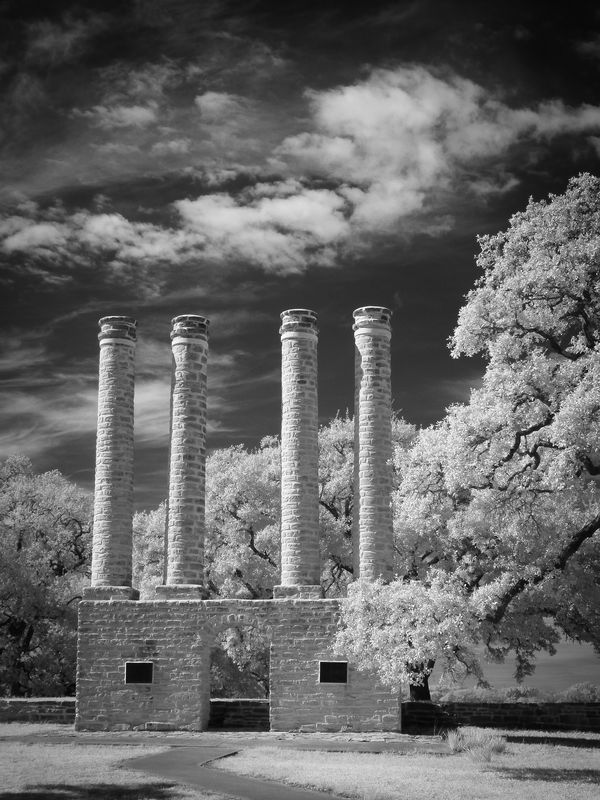
Feb 3, 2016 08:51:03 #
Laura72568 wrote:
I had both my DSLR and my converted IR with me this day in Independence TX. But I used my converted infrared camera to take this shot because I knew it would end up black & white. I love the uniqueness of the structure (Old Baylor Women's College) with all the clouds and foliage.
Thanks so much for posting an IR shot, Laura. Hope this doesn't sound like a dumb question, but with an IR camera, do you see the image through the viewfinder (or LCD) as shades of gray?
One reason I ask is I did two photo outings earlier this week with my Canon T3i dslr set to picture style monochrome. This was only so I could see the image on my LCD as b&w jpg. I still shot raw and converted from color to b&w in pp.
But being quite rusty with "seeing" in b&w, that trick with the LCD was quite helpful :)
Feb 3, 2016 09:07:22 #
Thinking in black and white requires an understanding of line, form , and the values of gray that color becomes in the final image.
The illustration that I used in my photography classes was to understand the visual and emotional response to the long stem red rose with its vibrant green leaves. Taken in black and white it comes out as just shades of gray. Lighting the subject has a great deal more to do with how that type of images will turn out.
Photographers today are pulverized by all the ads in the photo magazines that if they get the next mega pixel camera it will produce great photographs. I am old enough to recall how black and white movies used so many tricks in the way the scenes were lit. Classic was the use of shadows using a cucoloris. And what the heck is a cucoloris you may ask? Go here for its history:
http://search.yahoo.com/search;_ylc=X3oDMTFiaHBhMnJmBF9TAzIwMjM1MzgwNzUEaXRjAzEEc2VjA3NyY2hfcWEEc2xrA3NyY2hhc3Q-?p=lighting+using+a+cucalorus+film&fr=yfp-t-201-s
Lighting and composition are the foundational knowledge and pathways to understanding photography. The ironic thing is that unlike the equipment it is mostly free to those who are willing to learn it. That being said, the old school of successful art was to emulate the masters.
The illustration that I used in my photography classes was to understand the visual and emotional response to the long stem red rose with its vibrant green leaves. Taken in black and white it comes out as just shades of gray. Lighting the subject has a great deal more to do with how that type of images will turn out.
Photographers today are pulverized by all the ads in the photo magazines that if they get the next mega pixel camera it will produce great photographs. I am old enough to recall how black and white movies used so many tricks in the way the scenes were lit. Classic was the use of shadows using a cucoloris. And what the heck is a cucoloris you may ask? Go here for its history:
http://search.yahoo.com/search;_ylc=X3oDMTFiaHBhMnJmBF9TAzIwMjM1MzgwNzUEaXRjAzEEc2VjA3NyY2hfcWEEc2xrA3NyY2hhc3Q-?p=lighting+using+a+cucalorus+film&fr=yfp-t-201-s
Lighting and composition are the foundational knowledge and pathways to understanding photography. The ironic thing is that unlike the equipment it is mostly free to those who are willing to learn it. That being said, the old school of successful art was to emulate the masters.
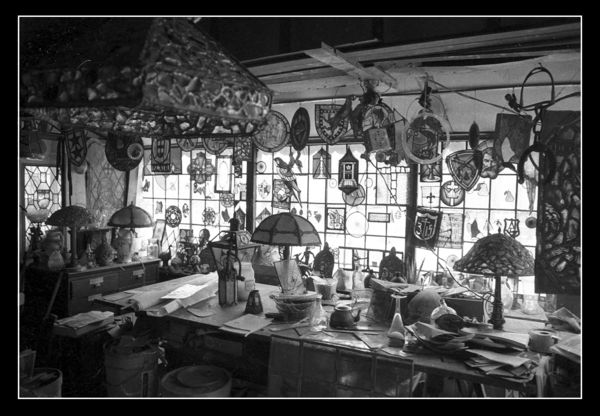
Feb 3, 2016 09:14:04 #
Old Timer
Loc: Greenfield, In.
I have played around at painting and one thing that help me was an artist instructor said when we are selecting our color pallet we should be aware of the values of the colors on white black scale. He suggested that when we put our values in the under painting it did not make any difference of the color but the value of the colors. Take a picture of you painting in black and white to see if the picture looks right and draws the eye in to the area or subject that you want to draw the attention to. I follow the same principle in photos.
I use Canons dpp for my black and whites. I first adjust the colors or saturation of colors to try to think what they will look like BW. Then I change pic to monochrome and go the curve adjustment and and start tweaking the shades of black to grey to white. I have not had a lot of experience but in the last couple of years of working on my system it seems to come easier. Not ever pic can be a good black and white, if you do not have a good sharp picture in focus you can not make a good black and white.
I do all my BW in raw as I have all the info there to work with. Jpeg I do not even try. I have been asked to convert them and I will not even try. I try at times to shoot with a black and white in mind and over time and experience you will find that you will become more aware of your subject and or what you are shooting and think in bw. I did not get serious about photography till after seventy. I was a point and shooter before and always wanted a camera that I could do more with. As I got to semi retirement I finally had time and resources to pursue it. Still learn even now at eighty, helps keep me thinking young. I have read some but learning your camera and soft ware is must, no short cuts.
After all we are painting with light.
I use Canons dpp for my black and whites. I first adjust the colors or saturation of colors to try to think what they will look like BW. Then I change pic to monochrome and go the curve adjustment and and start tweaking the shades of black to grey to white. I have not had a lot of experience but in the last couple of years of working on my system it seems to come easier. Not ever pic can be a good black and white, if you do not have a good sharp picture in focus you can not make a good black and white.
I do all my BW in raw as I have all the info there to work with. Jpeg I do not even try. I have been asked to convert them and I will not even try. I try at times to shoot with a black and white in mind and over time and experience you will find that you will become more aware of your subject and or what you are shooting and think in bw. I did not get serious about photography till after seventy. I was a point and shooter before and always wanted a camera that I could do more with. As I got to semi retirement I finally had time and resources to pursue it. Still learn even now at eighty, helps keep me thinking young. I have read some but learning your camera and soft ware is must, no short cuts.
After all we are painting with light.
Feb 3, 2016 09:19:57 #
Linda From Maine wrote:
Photographed with the intention of converting to b... (show quote)
Linda, forgive me, I must say, first looking at this image it had no interest to me. However, when I downloaded and zoomed in, I have a different opinion. So, if cropped a little tighter from the right to the left and leaving in the sky with the back lighting of the seed pods just to me makes it a more interesting image with a dramatic affect. This is just a personal opinion.
Dave
Feb 3, 2016 09:21:33 #
Old Timer
Loc: Greenfield, In.
You posted while I was writing mine. I agree with you discourse, we seem think alike but just express it different way.
Pixelmaster wrote:
Thinking in black and white requires an understand... (show quote)
Feb 3, 2016 09:37:36 #
Linda I found the only shot I have ever tried to change to b&w! It was taken last year originally in colour. Standing at the top of a hill looking down facing the sun, liked the shot but not the colours. My basic ipad app has a slider for b&w.
Feb 3, 2016 09:41:27 #
Laura72568 wrote:
I had both my DSLR and my converted IR with me this day in Independence TX. But I used my converted infrared camera to take this shot because I knew it would end up black & white. I love the uniqueness of the structure (Old Baylor Women's College) with all the clouds and foliage.
This is beautiful, - great composition, great capture, great presentation-and an excellent example of what can be done with IR. What is so interesting is how much differently one may have to "think" their B&W approach if applying it to IR. You had to know a lot about your own IR "anticipated outcome" to choose this composition, so it is actually not only thinking in B&W but thinking in IR too!
Feb 3, 2016 09:43:16 #
Pixelmaster wrote:
Thinking in black and white requires an understand... (show quote)
Thank you so much for your thoughtful and educational comments, Pixelmaster!
The rose example is one we can all readily visualize and put to good use.
The cucoloris information is fascinating! And I see you can readily purchase these aids, for anyone interested in still life photography.
Feb 3, 2016 09:47:41 #
Old Timer wrote:
...Not every pic can be a good black and white, if... (show quote)
Thank you for your terrific insights and information, Old Timer! One of the greatest joys of photography has to be that we can continue to learn and enjoy, no matter what our age :)
You are oh-so right about sharpness being a requirement, as I am often sadly reminded in my own shots.
Feb 3, 2016 09:48:14 #
Pixelmaster wrote:
Thinking in black and white requires an understand... (show quote)
Great comments to help us on our journey, and thanks for the link as well. I never heard of "cucaloris" before! Interesting info. Could it be that because the knowledge of lighting and composition are free, we devalue them? I notice (not just on UHH either) that there may be a tendency to expect that the newest and most expensive equipment will obviate the need to learn or use these things.
I like your image. I expect in color it would have been far too busy to be effective.Using monochrome tamed the scene.
If you want to reply, then register here. Registration is free and your account is created instantly, so you can post right away.

